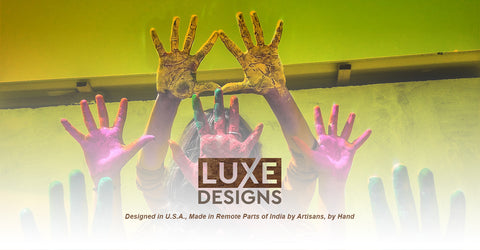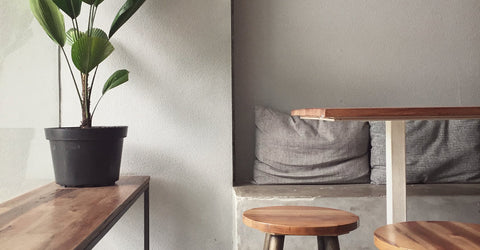Welcome to the world of the Indian Artisans!
Together with our mission to produce world-class products for our customers, we aim to help our Indian Artisans showcase their skills and talent when it comes to handcrafting.
We are working for a purpose; to provide our time and 10% of our profits to organizations in Artisan Community focusing on children’s education, empowering women, and helping the less privileged with food, water, shelter, and other necessities.
The Difference of Made in India Products
India is well-known for its strong sense of design and art – particularly in painting, sculpture, pottery, and textile arts. This can easily be observed from their modern and traditional forms of handcrafting.
It is a preservation of heritage. Indian Artisans choose to keep their traditional techniques even though the world is now embracing automation or factory processed products. This is one of the best things that make India’s products unique and authentic.
Handmade Products Are Much More Meaningful
We believe that our customers are getting more value for every purchase because each product we produce is a product of hard work and dedication.
Since our Artisans are utilizing the old-fashioned way of woodworking and handcrafting, you can ensure intricate details that factory-made products fail to deliver.
The Intricate Process
Source: Our friends at Mela Artisans
Wood:
The wood is first sorted according to variety in an open-air warehouse. It is carefully sanded and prepped before the carving procedure.
Once the shape is carved, the Artisans then use a pedal-powered machine to create more precision incisions. Right after that, the wood is whitewashed or painted accordingly.
As a finishing touch, Artisans use to add brass or other metal to create a contrast to the wood.
Horn and Bone:
The process for horn and bone products starts from cutting the pieces into the appropriate size, dyeing with perspective colors, and then drying.
Once the bone is ready, the design is carefully set on the metal base using adhesive. Aluminum is often used along with a layer of MDF or wood fiber compacted in a single layer.
The shape and pattern dictate how the bone is placed on the base. Artisans generally take 4 to 5 hours to complete a single piece with complex and original patterns.
The final product is taken to a finishing unit where the item is cleaned and prepped for shipping.
Ceramic:
For ceramic products, the process includes preparing and molding the clay, dying and decorating the creation with paint, adding a glaze to shine and strengthen the design, and finally firing the product in a kiln to stone perfection.
Stone:
The Artisans begin their stonework by cutting large slabs into small pieces. The rough shape is then cut using a variety of chiseling techniques.
The stone piece then undergoes a series of grinding and filing to create the desired shape.
A detailed eye and steady hand are required to create seamless designs for inlay work which Agra (home of the Taj Mahal) is famous for.
The pieces are polished as the final process.
Brass:
Crafting a mold is the first part of the creation of brass products. For this process, the sand is combined with clay and moistened with water to make it pliable. The sand must be compacted around the pattern – creating a cavity.
After it has set, the pattern is then removed and the cavity is filled with molten metal. And that’s the brass – an alloy which is a mixture of zinc and copper.
Once the metal has cooled, the sand mold is broken to reveal the resulting design.
Textile:
The process begins with the creation of a block – which is cut as a relief. This means that the raised areas will be the images that transfer to the fabric.
Once the fabric has been dyed, it is stretched on a printing table and the design is laid out.
The blocks are dipped into a color bath and pressed hard on the fabric. This process is repeated for each color used in the design. It requires great skill and accuracy to produce seamless flowing patterns without any trace of the block lines.
After that, the fabric is steamed and left to dry under the sun to fix the color.
Jewelry:
Horn is now a fascinating material utilized by designers in crafting jewelry. Unlike bone, it can be softened and made malleable by heating.
Since horn has a rough, dull surface, Artisans first sand and polish it to get the perfect shape. And it is then incorporated in different accessory creation – for necklaces, earrings, and bracelets.
We want to keep the harmony with nature that is why we opt to use sustainable materials.
You should feel good knowing the goods being purchased were made without harming the planet. All products are sourced with more FSC®-certified, recycled & upcycled materials, resulting in minimal waste.





Comments (0)
There are no comments for this article. Be the first one to leave a message!